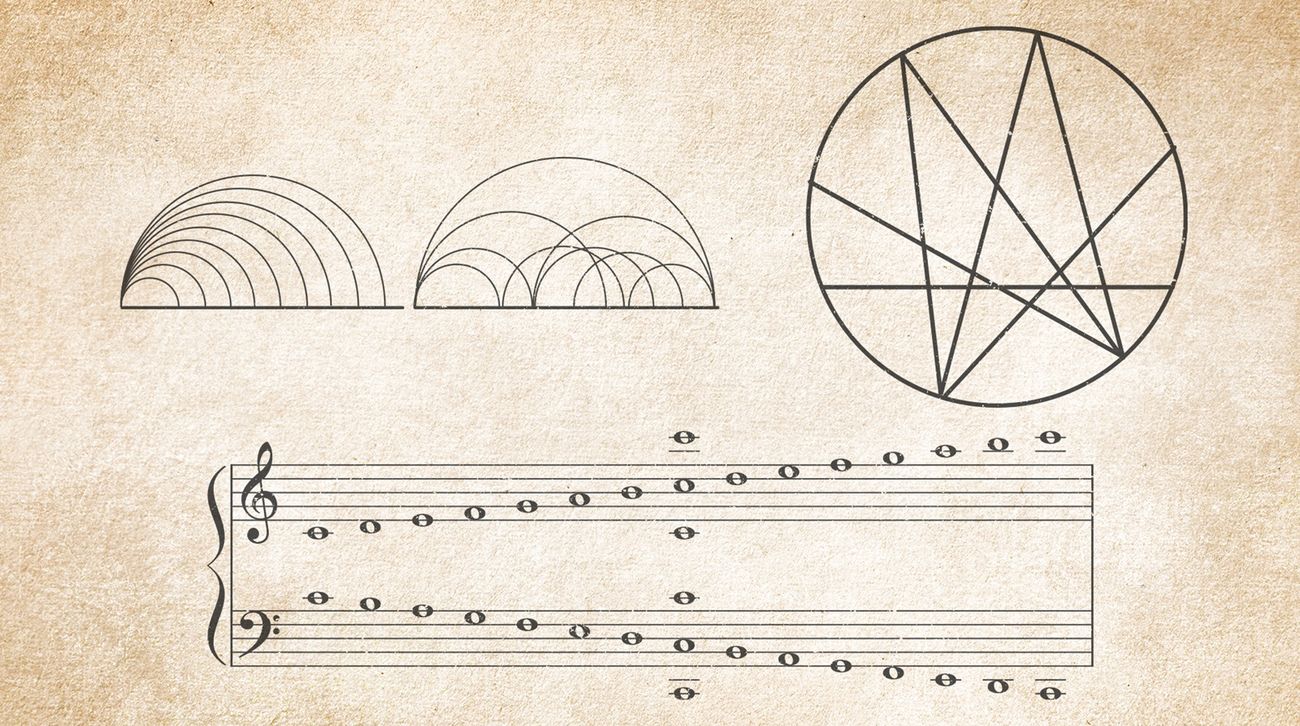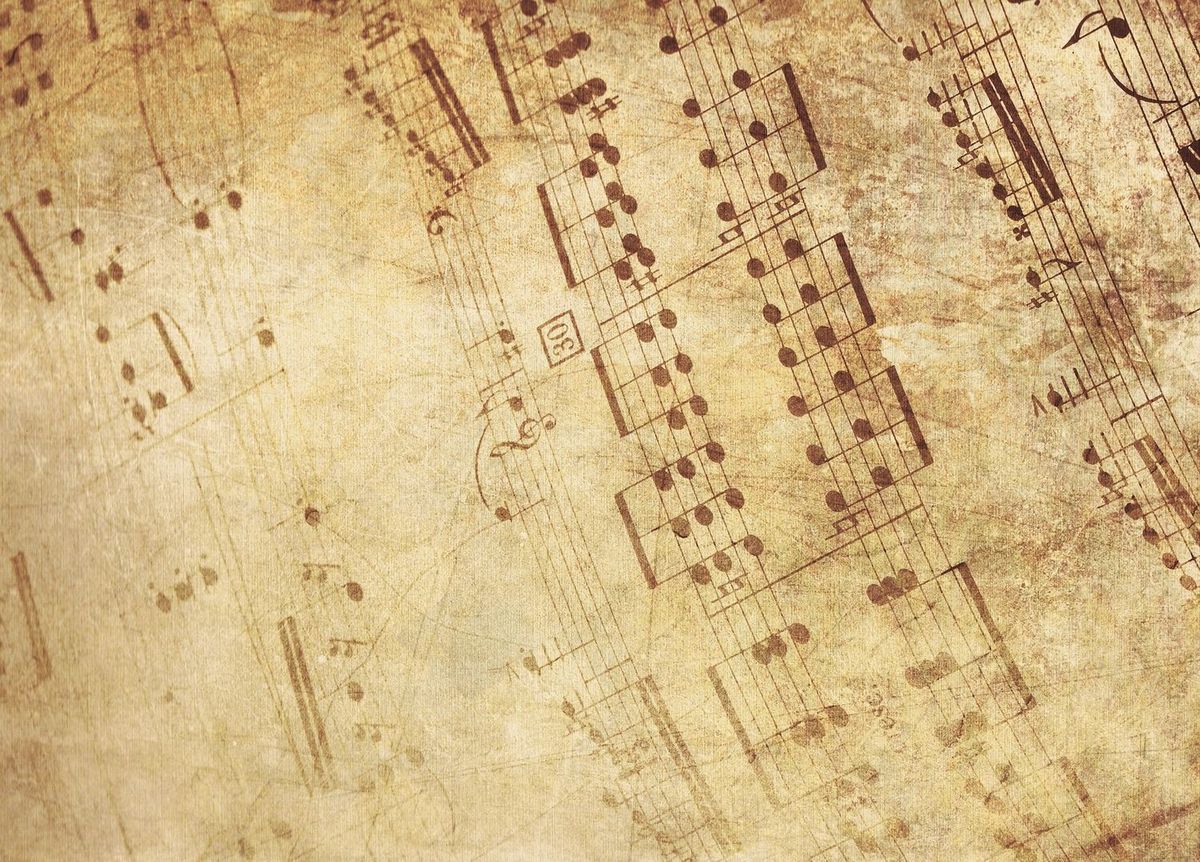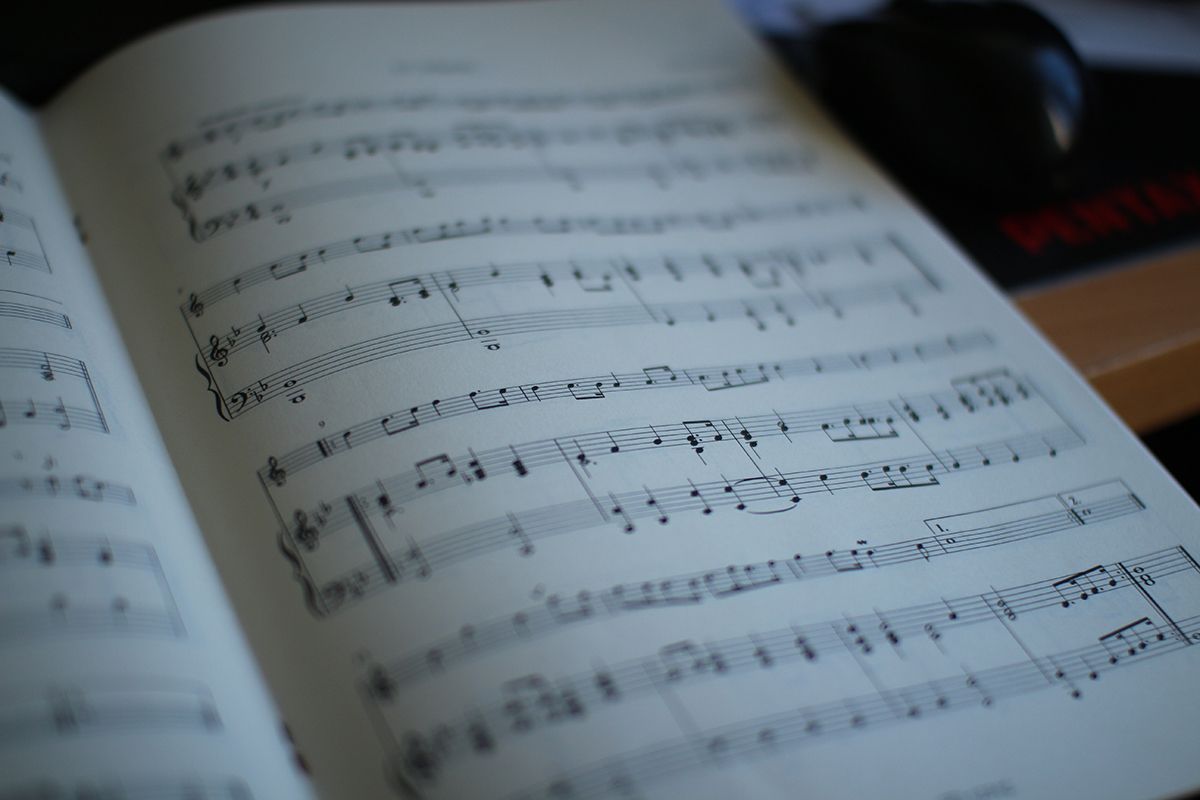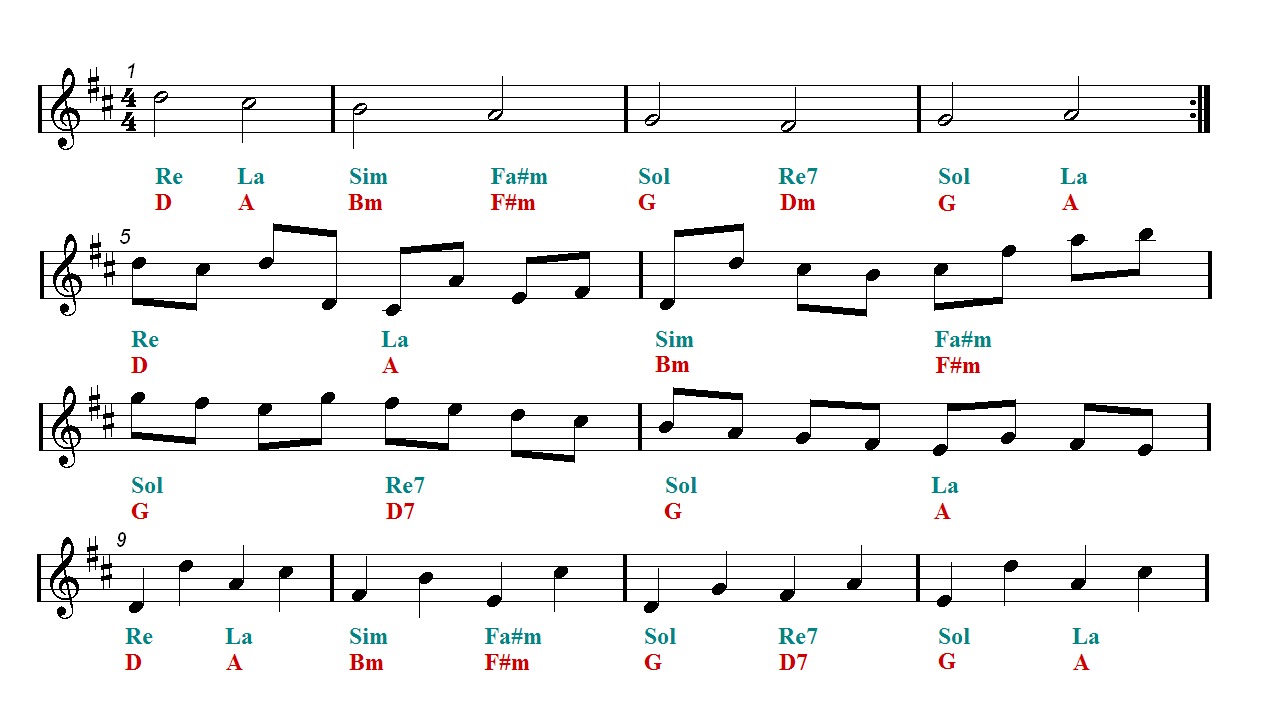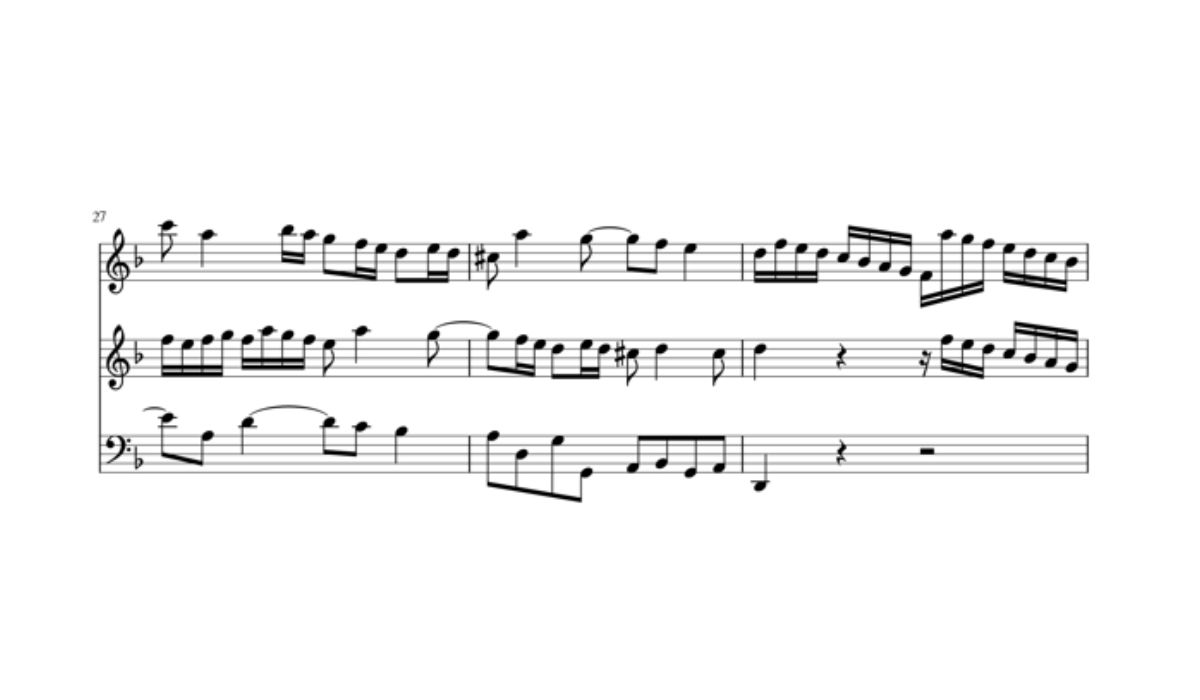Home>Production & Technology>Music Theory>Music Theory What Is Chord
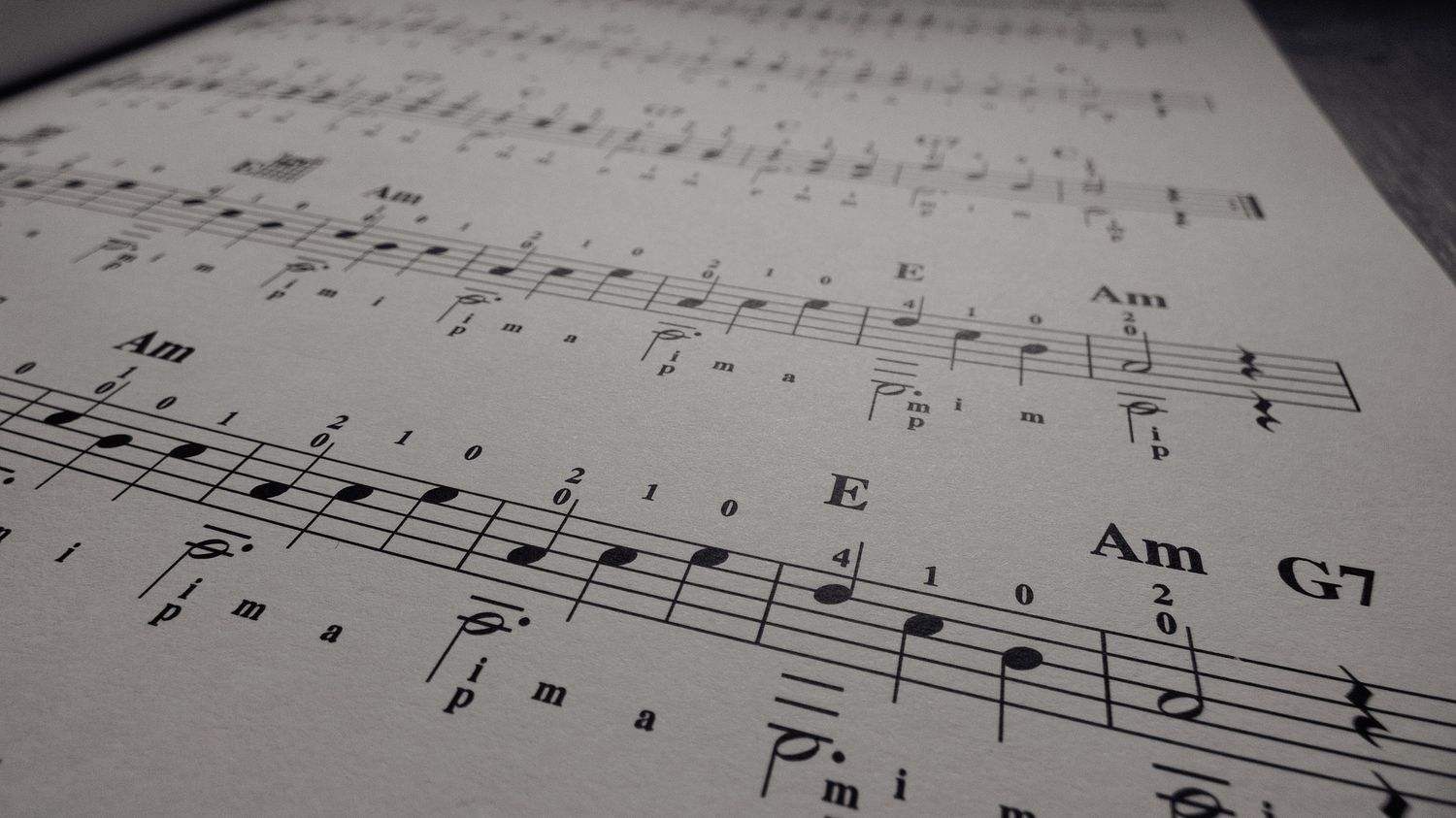

Music Theory
Music Theory What Is Chord
Published: January 30, 2024
Learn about music theory and understand what a chord is. Discover the fundamental concepts of music chords and how they contribute to harmonies and melodies.
(Many of the links in this article redirect to a specific reviewed product. Your purchase of these products through affiliate links helps to generate commission for AudioLover.com, at no extra cost. Learn more)
Table of Contents
Introduction
Welcome to the fascinating world of music theory! Music theory is the study of how music works – how melodies, harmonies, and rhythms come together to create beautiful compositions that touch our hearts and souls. One of the fundamental elements of music theory is the chord.
Chords are the building blocks of harmony, the vertical arrangement of notes that gives music depth, richness, and color. Understanding chords is essential for musicians and songwriters, as they provide the foundation for creating melodies, harmonies, and chord progressions that evoke different emotions and moods.
In this article, we will dive deep into the concept of chords, exploring their definition, components, and various types. We will also touch on chord progressions, inversions, and how chords are used in music to convey different emotions and create captivating musical experiences.
Whether you are a seasoned musician looking to expand your knowledge or a beginner eager to learn the basics of music theory, this article will serve as your comprehensive guide to understanding chords. So, let’s journey into the world of chords and explore the fascinating intricacies of music theory!
Definition of a Chord
A chord is a group of three or more musical notes played simultaneously. It is the combination of these notes that create the distinct sound and harmony of a chord. When played together, the notes form a vertical structure that provides a sense of stability and tonal quality to music.
Chords are often represented by chord symbols or chord names, such as C major (C), A minor (Am), or G7. These symbols indicate the root note of the chord, along with any additional notes or alterations. Chords can be played on various instruments, including piano, guitar, and even in vocal harmonies.
At its core, a chord consists of three essential elements – the root note, the third, and the fifth. The root note is the foundation of the chord, giving it its tonal center. The third is the note that determines whether the chord is major or minor, while the fifth provides additional stability and richness to the sound.
For example, in a C major chord (C), the root note is C, the third is E, and the fifth is G. In an A minor chord (Am), the root note is A, the third is C, and the fifth is E. These three notes, when played together, create the characteristic sound and quality of their respective chords.
Chords can vary in complexity, involving more than just the root, third, and fifth. Additional notes can be added to create different chord voicings, colors, and tensions. This leads to a wide variety of chords with unique characteristics and emotional qualities.
Understanding the definition of a chord is crucial for musicians as it lays the foundation for further exploration of music theory. By grasping the basic elements of a chord, we can begin to comprehend the complexity and beauty of chord progressions, harmonies, and the overall structure of music.
Basic Elements of a Chord
In order to understand chords fully, it is essential to grasp the basic elements that make up a chord. Let’s explore these elements:
- Root Note: The root note is the foundation of a chord. It is the starting point from which the chord is constructed, and it gives the chord its name. For example, in a C major chord, the root note is C. The root note provides the tonal center and establishes the overall key of a piece of music.
- Third: The third is an important element that determines whether a chord is major or minor. In a major chord, the third is a major third interval above the root note. In a minor chord, the third is a minor third interval above the root note. For example, in a C major chord, the third is E, while in a C minor chord, the third is Eb.
- Fifth: The fifth is another integral component of a chord. It is a perfect fifth interval above the root note. The fifth adds stability and richness to the sound of the chord. In a C major chord, the fifth is G.
These three elements – the root note, third, and fifth – form the foundation of most basic chords. Together, they create the fundamental structure and sound of a chord. However, it is important to note that chords can go beyond these basic elements, incorporating additional notes to create different chord voicings and variations.
When additional notes are added to the basic triad, we get extended and altered chords. These chords include the seventh, ninth, eleventh, and thirteenth, each adding its own unique flavor to the sound. For example, a C major seventh chord includes the root note (C), the major third (E), the perfect fifth (G), and the major seventh (B).
By understanding the basic elements of a chord, musicians can begin to build complex chord progressions, create interesting harmonies, and add depth and complexity to their musical compositions. These elements serve as the foundation for exploring the vast and captivating world of music theory.
Types of Chords
Chords come in various types, each with its own unique sound and character. Let’s explore some of the most common types of chords:
- Major Chords: Major chords are bright and happy-sounding. They consist of a root note, major third, and perfect fifth. Major chords are often denoted by a capital letter or simply the root note. For example, C major chord (C) or G major chord (G).
- Minor Chords: Minor chords have a more melancholic and somber feel compared to major chords. They are made up of a root note, minor third, and perfect fifth. Minor chords are usually indicated by a lowercase letter or the root note followed by ‘m’. For example, A minor chord (Am) or D minor chord (Dm).
- Diminished Chords: Diminished chords have a tense and dark quality. They consist of a root note, minor third, and diminished fifth. Diminished chords are denoted by a root note followed by a small circle or the symbol ‘dim’. For example, B diminished chord (Bdim) or F diminished chord (Fdim).
- Augmented Chords: Augmented chords have a vibrant and intense sound. They consist of a root note, major third, and augmented fifth. Augmented chords are indicated by a root note followed by the symbol ‘+’. For example, E augmented chord (E+) or G# augmented chord (G#+).
- Suspended Chords: Suspended chords have a unique and unresolved quality. They are formed by replacing the third of a major or minor chord with either a major second or a perfect fourth. Suspended chords are denoted by a root note followed by ‘sus’ and a number indicating the interval. For example, D suspended second chord (Dsus2) or F suspended fourth chord (Fsus4).
- Dominant Chords: Dominant chords are commonly used in blues, jazz, and rock music. They have a strong and tense sound. Dominant chords consist of a root note, major third, perfect fifth, and minor seventh. Dominant chords are usually indicated by a root note followed by ‘7’. For example, G7 or Bb dominant 7 (Bb7).
These are just a few examples of the many types of chords that exist in music theory. Each type of chord has its own distinct sound and emotional impact, adding depth and variety to musical compositions. Understanding the different types of chords allows musicians to create diverse and engaging harmonies, highlighting different emotions and moods in their music.
Major Chords
Major chords are among the most commonly used chords in music. They evoke a sense of brightness and happiness and are often associated with uplifting and joyful melodies. Major chords are built using a specific formula: a root note, a major third, and a perfect fifth.
To construct a major chord, let’s take the example of a C major chord (C). The root note is C, and from there, we count up four half steps (or two whole steps) to find the major third, which is E. Next, we count up three half steps from the major third to find the perfect fifth, which is G. When these three notes – C, E, and G – are played together, the result is a C major chord.
The major chord structure can be applied to any root note. For instance, if we take the root note D, we would count up four half steps to find the major third, which is F#, and count up three half steps from F# to find the perfect fifth, which is A. This combination of D, F#, and A creates a D major chord (D).
Major chords are often denoted by a capital letter representing the root note or the root note alone. For example, C major can be written as C, and G major can be written as G. These chord symbols make it easier for musicians to identify and communicate the chords they’re playing.
In music theory, major chords are considered consonant and stable, providing a sense of resolution and closure. They are widely used in various genres, including pop, rock, classical, and jazz. Major chords form the basis of many popular songs and can be found in countless musical compositions.
Experimenting with major chords on your instrument or in your compositions can lead to beautiful and uplifting melodies. Incorporating major chords into chord progressions can create a sense of positivity and brightness. So, don’t be afraid to explore the world of major chords and let their cheerful and optimistic qualities enhance your musical creations.
Minor Chords
Minor chords are an essential component of music theory and provide a different emotional quality compared to major chords. They often evoke a more somber, introspective, or melancholic feeling in music. Minor chords are created by combining a root note, a minor third interval, and a perfect fifth.
To illustrate how a minor chord is constructed, let’s examine the example of an A minor chord (Am). The root note is A. From there, we count up three half steps to find the minor third, which is C. Finally, we count up four half steps from the minor third to find the perfect fifth, which is E. When these three notes – A, C, and E – are played together, they form an A minor chord.
Similar to major chords, this formula can be applied to any root note. For instance, if we take the root note B, the minor third would be D, and the perfect fifth would be F#. This combination of B, D, and F# creates a B minor chord (Bm).
Minor chords are often denoted by a lowercase letter representing the root note and sometimes followed by ‘m’. For example, A minor can be written as Am, and B minor can be written as Bm. This notation helps musicians quickly identify and communicate the type of chord they are playing.
Minor chords add depth, complexity, and emotion to musical compositions. They can convey a wide range of feelings, from sadness to introspection and even mystery. Minor chords are commonly used in genres such as classical, jazz, blues, and rock music, where they create a poignant and soulful atmosphere.
Exploring the use of minor chords in your musical journey will expand your creative palette. Experimenting with different chord progressions and melodies using minor chords can lead to beautiful and emotionally rich compositions. So, embrace the power of minor chords and let their distinctive tonal characteristics enhance your musical expressions.
Diminished Chords
Diminished chords possess a unique and tense quality that can add a touch of complexity and mystery to music. These chords are formed by combining a root note, a minor third, and a diminished fifth, creating a dissonant and unsettled sound.
To better understand how diminished chords are constructed, let’s use the example of a B diminished chord (Bdim). The root note is B, followed by a minor third, which is D. From there, we count three half steps to find the diminished fifth, which is F. When played together, these three notes – B, D, and F – create a B diminished chord.
Diminished chords are distinctively identified by a root note followed by a small circle (°) or the symbol ‘dim’. For example, B diminished can be written as B° or Bdim. This notation helps musicians quickly recognize and communicate the type of chord being played in written music or lead sheets.
The dissonant and ambiguous nature of diminished chords makes them useful for creating tension and adding suspense in music. They are commonly used to transition between different chords or to resolve to a more stable chord. Diminished chords can be found in various genres, including jazz, classical, and even in more progressive and experimental musical styles.
Diminished chords possess a versatile and enigmatic quality, and their distinct tonal character can add depth and intrigue to your musical compositions. Experimenting with diminished chords in your chord progressions and melodies will help you explore new musical territories and create captivating musical moments.
Although diminished chords might seem complex at first, embracing and understanding their unique sound will expand your musical vocabulary and allow you to convey a range of emotions through your compositions. So, don’t shy away from the mysterious allure of diminished chords – let them guide you to new and exciting musical expressions.
Augmented Chords
Augmented chords add a vibrant and intense flavor to music, infusing compositions with a sense of richness and tension. These chords are constructed by combining a root note, a major third, and an augmented fifth, resulting in a distinctive and augmented sound.
To better understand how augmented chords are formed, let’s use the example of an E augmented chord (E+). The root note is E, followed by a major third, which is G#. From there, we count four half steps to find the augmented fifth, which is B#. These three notes – E, G#, and B# – come together to create an E augmented chord.
The notation for augmented chords typically consists of a root note followed by the symbol ‘+’. For example, E augmented can be written as E+ or Eaug. This symbol allows musicians to quickly identify and communicate the type of chord being played when reading sheet music or discussing chord progressions.
Augmented chords have a distinct sound that can add tension, suspense, and a unique tonal color to musical compositions. They are often used in jazz, classical, and contemporary music genres, offering an expressive and adventurous quality.
When incorporated into chord progressions, augmented chords can create a sense of anticipation and intensity. They are particularly effective in transitional moments, leading to a resolution or delivering a powerful musical climax. Augmented chords provide an opportunity for artistic exploration, allowing musicians to experiment with unconventional harmonic choices and create captivating musical landscapes.
Embracing the use of augmented chords in your musical creations opens up a world of creative possibilities. Whether you’re a composer, songwriter, or improviser, incorporating augmented chords can bring a heightened sense of depth and intrigue to your music. So, don’t hesitate to explore the captivating sound of augmented chords and let them become a powerful tool in your musical arsenal.
Suspended Chords
Suspended chords, also known as sus chords, bring a unique and intriguing quality to music. These chords replace the third of a major or minor chord with either a major second or a perfect fourth, creating a suspended and unresolved sound.
To better understand suspended chords, let’s take the example of a D suspended second chord (Dsus2). The root note is D, and instead of playing the regular major or minor third, we use the major second, which is E. Along with the perfect fifth, A, these three notes – D, E, and A – form a D suspended second chord.
Suspended chords can also be created by replacing the third with a perfect fourth. For instance, a G suspended fourth chord (Gsus4) uses the root note G, the perfect fourth C, and the perfect fifth D. This combination provides a suspended and unresolved sound.
Notation for suspended chords typically includes the root note followed by ‘sus’ and a number indicating the interval. For example, D suspended second can be written as Dsus2, and G suspended fourth can be written as Gsus4. This notation helps musicians identify and communicate the specific type of suspended chord being played or written in sheet music.
Suspended chords introduce an element of ambiguity and tension to musical compositions. They create a sense of anticipation and can be used to build and release musical tension. Suspended chords are frequently employed in genres like folk, rock, and pop music, where they contribute to the creation of memorable hooks and melodic phrases.
By incorporating suspended chords into your chord progressions and melodies, you can add an interesting and unique twist to your musical compositions. The unresolved quality of suspended chords offers a departure from traditional harmony, encouraging exploration and experimentation in your musical creations.
So, don’t hesitate to explore the captivating sound of suspended chords and let their evocative and unresolved nature become a tool for your musical storytelling. Use them to create tension, build anticipation, and captivate your listeners with intriguing and unpredictable harmonies.
Dominant Chords
Dominant chords play a significant role in music, especially in genres like jazz, blues, and rock. These chords have a strong and tense sound that can create a sense of anticipation and resolution. Dominant chords are constructed by combining a root note, a major third, a perfect fifth, and a minor seventh.
Let’s take the example of a G dominant seventh chord (G7) to understand how dominant chords are formed. The root note is G, followed by the major third, which is B, and the perfect fifth, which is D. In addition to these notes, we also include the minor seventh, which is F. When these four notes – G, B, D, and F – are played together, they create a G dominant seventh chord.
Dominate chords are often denoted by a capital letter followed by ‘7’. For example, G dominant seventh can be written as G7. This notation helps musicians identify the specific type of chord being played or written in sheet music.
Dominant chords are known for their strong and tense sound, often used to create harmonic movement and lead to a resolution. In jazz and blues, dominant chords are essential for creating tension and providing a platform for improvisation. They also have a prominent role in cadences and chord progressions, anticipating the resolution to the tonic chord.
When used in a chord progression, dominant chords can add excitement and impact to your music. They have a distinct character that can intensify the emotions and dynamics of a composition. Dominant chords are particularly effective when combined with other chords to create complex and interesting chord progressions.
Experimenting with dominant chords in different musical contexts can help you develop a deeper understanding of their expressive power. Incorporating dominant chords into your compositions and improvisations will allow you to harness their tension and release, enhancing your musical storytelling and connecting more deeply with your audience.
So, embrace the strength and tension of dominant chords and let them be your guide as you explore the expressive possibilities of music.
Extended Chords
Extended chords are chords that go beyond the basic triads (three-note chords) by incorporating additional notes that extend the harmony and add color to the sound. These chords are commonly used in jazz, fusion, and contemporary music to create rich and complex harmonies.
The most commonly used extended chords include the seventh, ninth, eleventh, and thirteenth chords. Let’s delve into each of these types:
- Seventh Chords: Seventh chords are created by adding a seventh interval to a basic triad. For example, a C major seventh chord (Cmaj7) adds the major seventh interval (B) to the C major triad (C, E, G). Seventh chords provide a smoother and more sophisticated sound, often used in jazz and popular music.
- Ninth Chords: Ninth chords include the root note, third, fifth, and major ninth interval. A D ninth chord (D9) consists of D, F#, A, and E. Ninth chords add more color and complexity to a chord progression, commonly used in jazz and funk music.
- Eleventh Chords: Eleventh chords build upon the foundation of seventh chords by adding the perfect eleventh interval. An F eleventh chord (F11) includes F, A, C, E, and Bb. Eleventh chords have a rich and jazzy sound, commonly found in jazz and fusion genres.
- Thirteenth Chords: Thirteenth chords include the root note, third, fifth, seventh, ninth, and thirteenth intervals. For example, a G thirteenth chord (G13) contains G, B, D, F, A, and E. Thirteenth chords create a lush and sophisticated sound and are often used in jazz and R&B.
Extended chords provide an expanded harmonic palette, allowing musicians to explore new and interesting chord progressions. The additional notes add complexity and color, enhancing the mood and tonal variety of the music.
Understanding extended chords opens up a world of possibilities for composers, arrangers, and improvisers. Experimenting with different combinations of extended chords can result in unique and captivating musical expressions. So, don’t hesitate to incorporate extended chords into your compositions and improvisations, and let their rich textures and harmonic nuances elevate your music.
Inversions of Chords
Inversions of chords are alternative voicings that occur when the notes of a chord are rearranged, creating a different order of the root, third, and fifth. Inversions provide a fresh perspective on chord progressions and can add movement, smooth voice leading, and a unique sonic character to music.
There are three main types of chord inversions: root position, first inversion, and second inversion.
- Root Position: In the root position, the root note of the chord is the lowest note. For instance, a C major chord (C) in root position consists of the notes C, E, and G, with C as the lowest note. Root position chords have a strong and stable sound, often used as the foundational harmony in a progression.
- First Inversion: In the first inversion, the third of the chord becomes the lowest note. Using the same example, a C major chord (C) in first inversion would have the notes E, G, and C, with E as the lowest note. First inversion chords have a slightly more open and airy sound, providing a sense of lightness and movement.
- Second Inversion: In the second inversion, the fifth of the chord becomes the lowest note. Continuing with the C major chord example, a C major chord (C) in second inversion would consist of the notes G, C, and E, with G as the lowest note. Second inversion chords have an uplifting and often more unstable sound, adding tension and creating a desire for resolution.
Chord inversions are not confined to triads but can also be applied to extended chords. For example, a G7 chord in root position would be G, B, D, F, while in first inversion, it would be B, D, F, G, with B as the lowest note.
Using chord inversions in a musical composition or improvisation can enhance the overall sound and create smooth voice leading. By using inversions, you can create a stronger sense of harmonic motion and avoid large leaps between chords or notes.
Experimenting with chord inversions in your playing or composing can offer new harmonic possibilities and a fresh perspective on familiar progressions. It allows you to explore different textures and create a more varied and interesting musical landscape. So, dive into the world of chord inversions and let their transformative qualities elevate your music.
Chord Progressions
Chord progressions are the backbone of musical compositions. They are a series of chords played in a specific order, creating movement and shaping the overall structure of a piece of music. Chord progressions serve as the roadmap, guiding the listener through different emotional landscapes and providing a sense of direction and resolution.
There are countless chord progressions used in various genres and styles of music, each with its own unique sound and mood. Some common chord progressions include the I-IV-V, ii-V-I, and the circle of fifths progression.
- I-IV-V: The I-IV-V progression is widely used in pop, rock, and blues music. It involves the chords built on the first (I), fourth (IV), and fifth (V) degrees of a major scale. For example, in the key of C major, the I-IV-V progression would consist of the chords C, F, and G. This progression creates a strong and inspiring sound.
- ii-V-I: The ii-V-I progression is commonly found in jazz and is known for its smooth and sophisticated sound. It involves the chords built on the second (ii), fifth (V), and first (I) degrees of a major scale. For instance, in the key of C major, the ii-V-I progression would consist of the chords Dm7, G7, and Cmaj7. This progression provides a sense of harmonic movement and resolution.
- Circle of Fifths: The circle of fifths progression is a widely used sequence of chords that moves in cycles of fifths or fourths. It is often seen in classical, jazz, and popular music. The circle of fifths progression can be expanded into a longer sequence, incorporating dominant chords to create tension and resolution. This progression creates a sense of returning to the tonic and can be found in various key modulations within a piece of music.
Chord progressions are not limited to these examples, and musicians have the freedom to explore and create their own unique progressions. Understanding chord progressions helps composers, songwriters, and improvisers craft engaging and memorable melodies around the harmonic foundation. The choice of chord progression can greatly impact the mood, emotional impact, and overall character of a piece of music.
Experimenting with different chord progressions can provide inspiration and open up new creative avenues. By combining chords in unique ways or incorporating unexpected progressions, you can create fresh and innovative musical compositions. So, dive into the world of chord progressions, and let them guide your musical journey as you explore, express, and captivate through the power of harmony.
Conclusion
Understanding music theory and the intricacies of chords is a valuable tool for any musician. Chords provide the foundation for harmonies, melodies, and chord progressions, shaping the emotional landscape and overall impact of a composition. Whether you’re a seasoned musician or just starting your musical journey, diving into the world of chords opens up a world of creative possibilities.
In this article, we explored the definition of chords and their basic elements, delving into major, minor, diminished, augmented, suspended, and dominant chords. We discussed how extended chords add complexity and color to harmonic structures, and the creative potential of chord inversions. We also touched on the importance of chord progressions in guiding the listener through a musical narrative, creating tension and resolution.
As you continue your musical exploration, don’t be afraid to experiment with different chords, progressions, and voicings. Embrace the power of major chords to bring brightness and joy, the melancholic allure of minor chords, the tension and mystery of diminished chords, the vibrancy of augmented chords, and the uniqueness of suspended chords. Dive into the possibilities of extended chords, inversions, and the beauty of chord progressions.
Remember, music theory is not meant to stifle creativity but to enhance it. Use your knowledge of chords as a tool to express your emotions, tell your story, and connect with your audience on a deeper level. Whether you’re composing, improvising, or analyzing music, understanding chords will empower you to create captivating and meaningful musical experiences.
So, embrace the beauty of chords, continue to learn and explore, and let your musical journey be enriched by the endless harmonies and possibilities that chords offer. As you strive to master music theory, may your understanding of chords become a catalyst for your creative expression and a gateway to infinite musical horizons.

